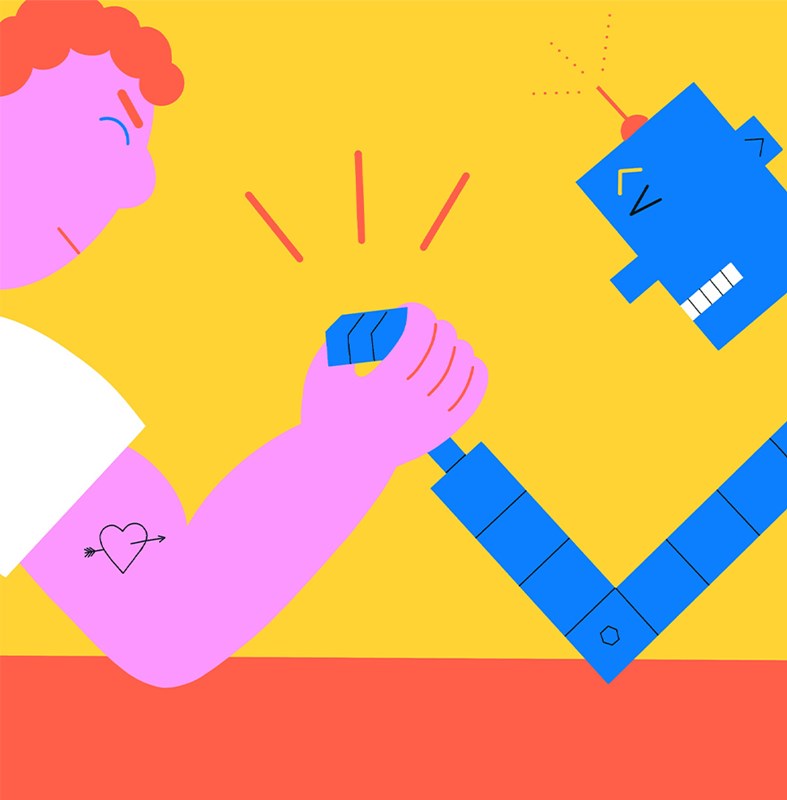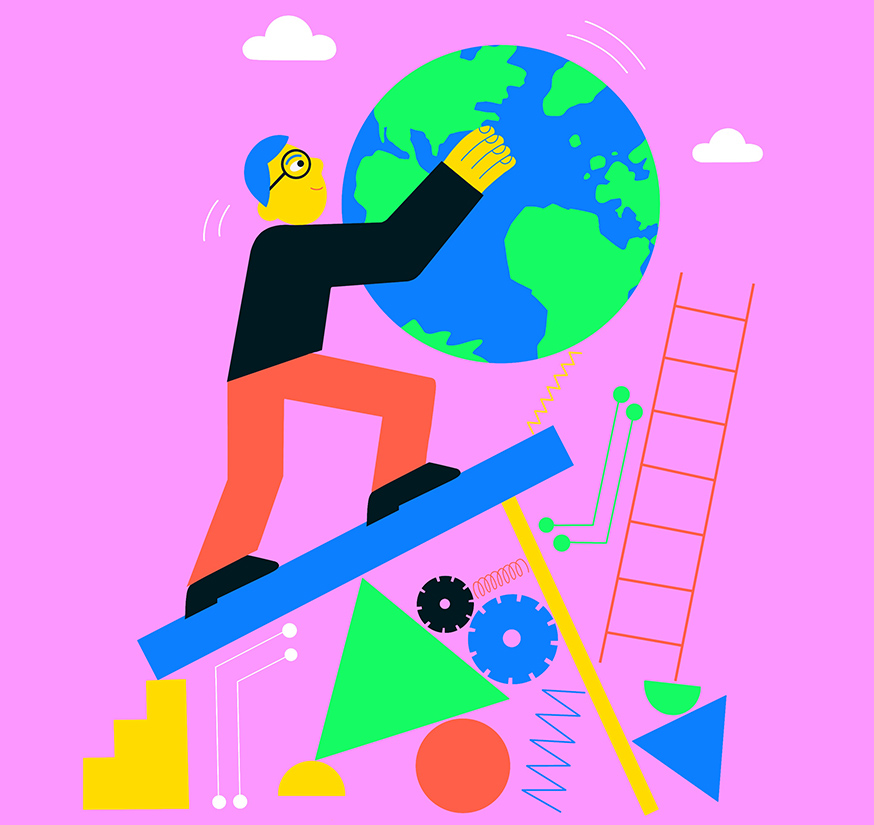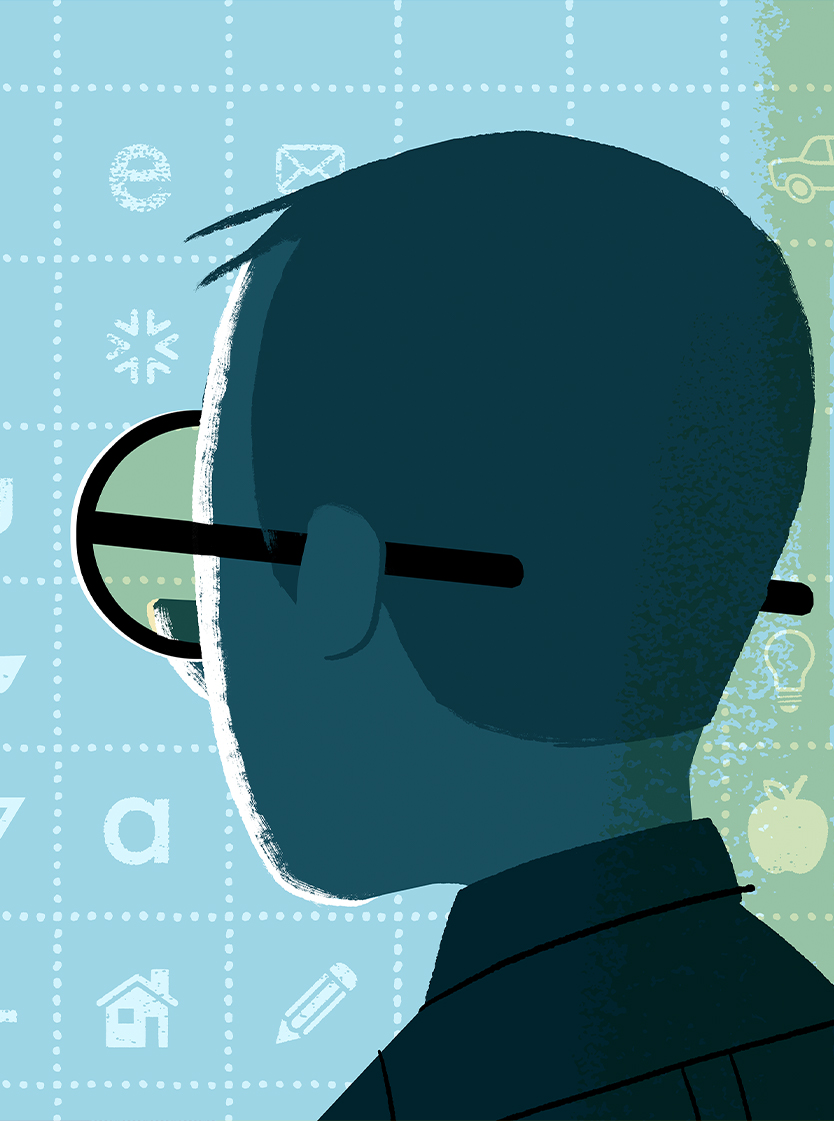Human Creativity And Ai For Unlimited Intelligence
By Sean Gourley

Emily Eldridge

Humans and machines each have their own strengths and weaknesses. The future must not be about humans versus machines, but about them combining strengths to fight the world’s problems, writes Sean Gourley.
The human brain has the ability to store the equivalent of 2.5 million gigabytes of digital memory, enough to store over three years’ worth of 24/7 video. This incredibly complex neural network has allowed us to achieve impressive feats, such as developing medicine that saves billions of lives, the ability to travel to and walk on the moon, and creating the internet. Up until now, humans have had the most advanced minds on the planet. Yet, as machines get exponentially smarter, the human monopoly on intelligence is gradually fading away. It is my firm belief that the interaction between humans and Artificial Intelligence (AI) will be the defining relationship of the future. It’s up to us to decide what that should look like.
Often it is assumed that we—as humans—are trying to inject our version of intelligence into machines. This is why, when you speak to people about AI, they conjure up images of conscious robots in a dystopian future. But this assumption fails to understand a critical point: humans and machines are both intelligent, but in fundamentally different ways. As humans, we are subject to biological limitations. We can’t jump more than 2.5 metres in the air, and no person has ever run faster than 45 km per hour. But even more important than our physical limitations are our mental constraints.
Our brains simply cannot match the speed and scale at which machines process information. If you were to take every book that you have ever read in your life and give it to a computer, it would be able to process it in under a day—and thanks to recent advancements in natural language processing (NLP), it could also summarise and conduct advanced analysis on all of the texts as well.

Take for example the fighter jet that is controlled by a machine. This jet can beat the one that is flown by a human—not because machines possess more intelligence, but because they possess a different intelligence: they are faster to identify patterns and do not black out when the G-forces get too high. It is now a fact of life that machines perform better than humans at a range of tasks. As such, we must focus on identifying intrinsic human constraints so that we can drive the maximum potential of AI.
Crucially though, none of this is to say that machines are omnipotent. There are myriad tasks that machines perform poorly. In fact, it is the tasks humans find easy and intuitive that computers find extremely difficult. This key concept in AI is known as Moravec’s Paradox. For example, machines struggle to understand causal relationships. An experiment designed by Joshua Tenenbaum and colleagues demonstrated that when asked questions about objects moving in a virtual environment, while the machine was able to effectively describe what was happening, it was poor when it came to explaining the why, and what actually caused the objects to move.

It is precisely because the intelligence of both humans and machines have their own strengths and weaknesses that the future should embrace their collaboration. Consider the role of humans and AI in helping displaced persons. Satellite imagery can detect where and when large groups of displaced persons are moving—something a human is incapable of doing at scale.
But only a human is able to decipher how to help these people, and what to do with the information. It is only by recognising and embracing the respective strengths and weaknesses of the two types of intelligence that a problem like this can be most effectively addressed.
“The future must not be humans versus machines, but humans and machines versus the world’s problems”
Sean Gourley

Of course, in the future we will continue teaching machines what we know. But there is another dynamic going on that is often overlooked: the more we teach the machines, the more they will teach us. This is precisely what Lee Sedol did after he lost to Google’s machine AlphaGo. Having been so inspired by the machine’s incredible ‘37th Move’ in the second game, Sedol went on to win a series of consecutive matches. It may have started by humans teaching the machine how to play Go, but it ended with the machine giving humans new ideas and insights into the nature of an ancient board game.
We talk a lot about how machines will replace us and take our jobs. Yet, this perspective is short sighted because someone has to build and teach these machines—and there are a lot of things for us to teach. This coming decade will be about setting up the next generations for success so that we are positioned to decide on the nature of the human-machine relationship. How precisely this relationship will look is still unclear, but one thing is for certain: the future must not be humans versus machines, but humans and machines versus the world’s problems.








